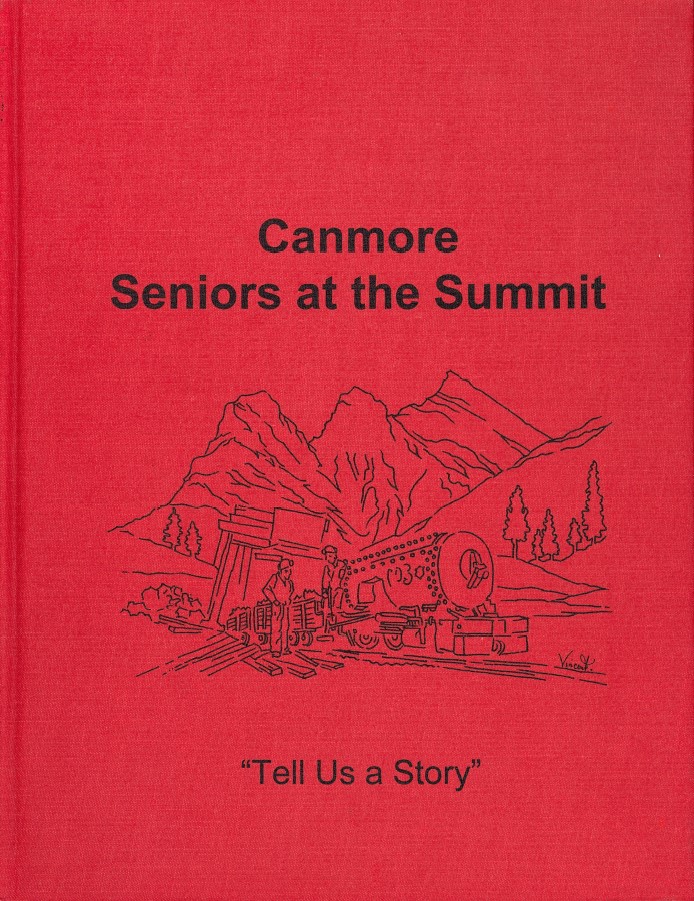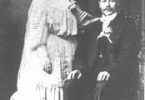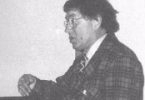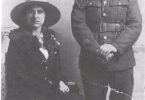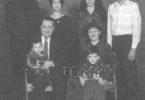Sonja Faupel was born in 1927 in Ratibor, Germany, a few kilometres from the Polish border. When her mother died in 1942, her father, who was a photographer in the German army, placed Sonja in a nearby convent. She remained there until the end of World War II. As the Russian army approached the region, the nuns discharged their students and sent them home. When Sonja reached her house in the bombed-out town, the entire family had gone, in flight from the Russians. Conditions there were so terrible a cousin advised her to leave by whatever means possible. Alone, she travelled by horse-drawn wagon to Yugoslavia and then, by foot, to the German Alps, already Russian-occupied, where her aunt lived. Eventually, the four sisters, one brother and their children were reunited. Their father, who had spent the last years on the Russian front, was repatriated in 1946, minus both legs, lost as a result of severe frostbite.
In 1947, Sonja’s oldest sister located her missing husband, working for the American army in Bavaria. He was able to bring his wife out of the Russian zone and then, one by one, each family member. With no identity papers, they (known as “D.P.”s) walked and rode on wagons to Bavaria where they were forced to survive by any possible means. The American soldiers handed out candy but no food was forthcoming.
By 1949-50, the situation had improved somewhat. Sonja worked in the kitchen of a restaurant, earning fifty German Marks per month (the price of a package of American cigarettes), plus room and board. Every two weeks, she was allowed a day off to visit her family. It was during this period that Sonja fell in love and bore a child out of wedlock. Rejected by her family, she got in touch with an aunt who had emigrated to Canada. In 1953, Sonja and her son travelled to Drumheller, Alberta, where her aunt had arranged for her to marry a coal miner. Imagine the culture shock! – a young woman, exhausted from her long journey to a foreign and desolate landscape, speaking no English, marrying a total stranger, and confined to her house with no friends to talk to.
Two years and two more children later, Sonja and her husband moved to Canmore where he worked underground in the mine. The surrounding mountains of the Bow Valley reminded her of home and she settled into her new life. Their first house was in the original Canmore Hospital building on Main Street, the first house in town to have a coal furnace. Coal cost $6.00 a ton and rent was $9.00 a month. Eventually, they built a house on 8th Avenue, where the family lived for several years.
Mary Rodda, owner of the Canmore Hotel, became Sonja’s “guardian angel”, employing her in the hotel kitchen. Mary told her, “If you can feed your kids, you can feed the customers”, so Sonja became cook in the hotel restaurant from 1967 to 1975. After the hotel was sold in 1975, Sonja took a job as cook in the Husky service station restaurant at Deadman’s Flats. It was there she met Karl Kritsch, “a customer I couldn’t get rid of”, Sonja says. Karl understood Sonja’s difficult history and present struggles.
Karl grew up in a motherless home in the eastern part of Germany, the youngest of five children. Life was very hard. At sixteen, he was conscripted into the German army and sent to the Russian Front. There he was taken prisoner but he does not choose to recall these painful memories. In 1951, he came to Canada to work on a farm near Lloydminster. Later, he was employed with a highway construction crew which brought him to the Bow Valley and the Husky restaurant. He was a lonely 42-year-old bachelor who was very kind to Sonja and her five children. He stayed with them when she went to work and helped fix up her house on Highway IA (site of the present-day Canmore Pain Clinic)
This was a happier time for Sonja. The older children had jobs and contributed to household expenses. She was free of her earlier abusive marriage and she had Karl’s companionship. After a time, a daughter, Elka was born to them. They moved to a house on Third Street and Sonja continued working until her older daughter got married. She then stayed home with Elka and baby-sat other children. She especially remembers caring for Danny and Brandy LeBlanc, who were snuggled into her big feather bed when bedtime rolled around. Once Elke started school, Sonja took on house-cleaning jobs.
During the 1988 Olympics, Sonja was hired as a cook and Karl as a cleaner in the Athletes’ Village, an experience both thoroughly enjoyed. Their desire to stay busy has kept them active in retirement. Sonja enjoys looking after her home and a variety of crafts, from crocheting and knitting, to doing needlepoint and ceramics. Karl has become well-known in Canmore on his bike and in his truck, picking up bottles, cans and garbage all around town and along the highway, often in the company of his dog. He has several clients who regularly ask for his services.
From difficult beginnings, Sonja and Karl have carved out a meaningful life in Canmore. They like to reminisce about town life in earlier times when neighbours knew and welcomed each other, and where friends were supportive in times of need. Today, they are proud of a large family – Gerhardt, Helmut, Ester, Steven, Sonja and Elka, ten grandchildren in Alberta and British Columbia and their first great-grandchild.
In Canmore Seniors at the Summit, ed. Canmore Seniors Association, 2000, p.153-154.

